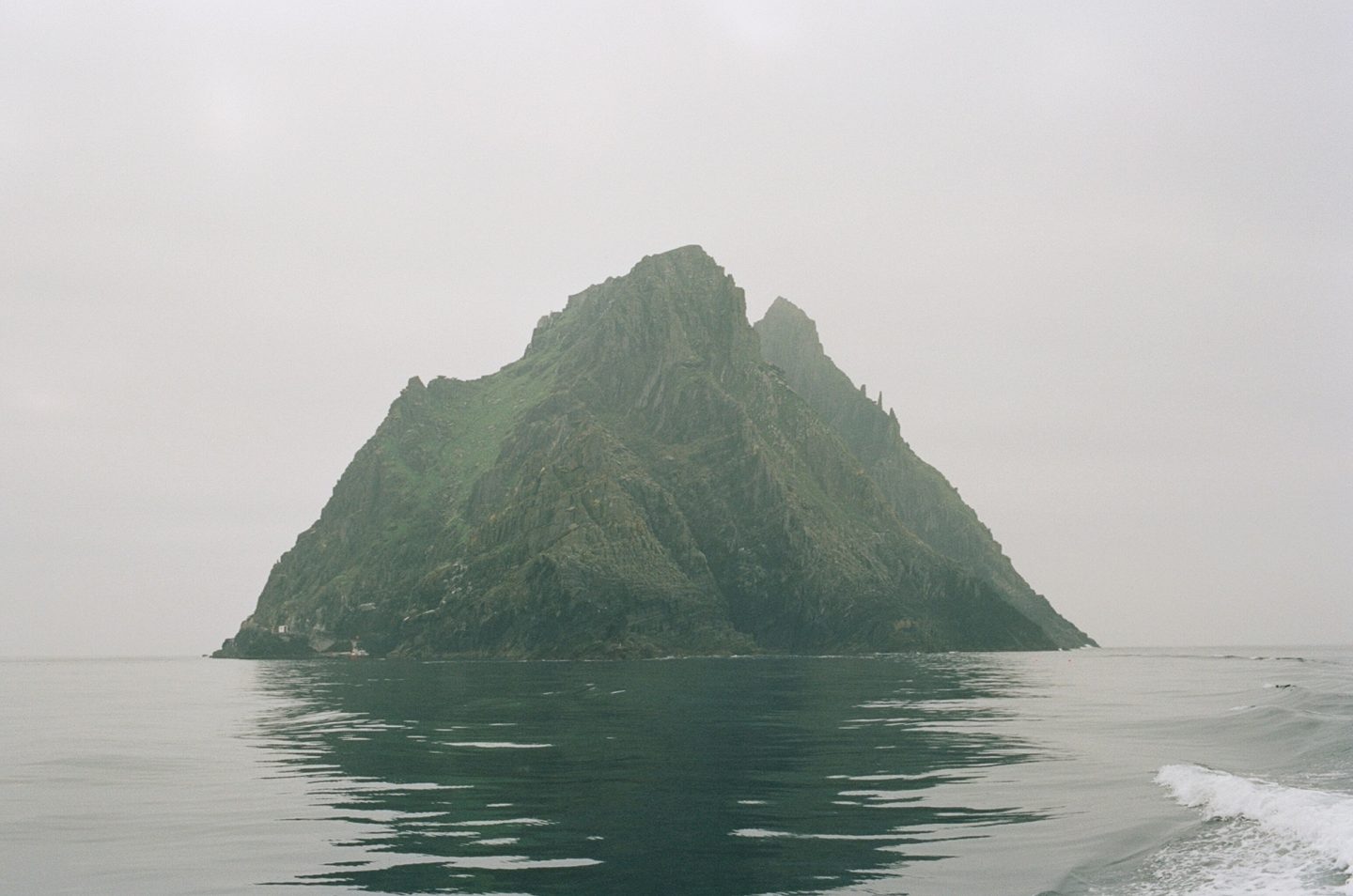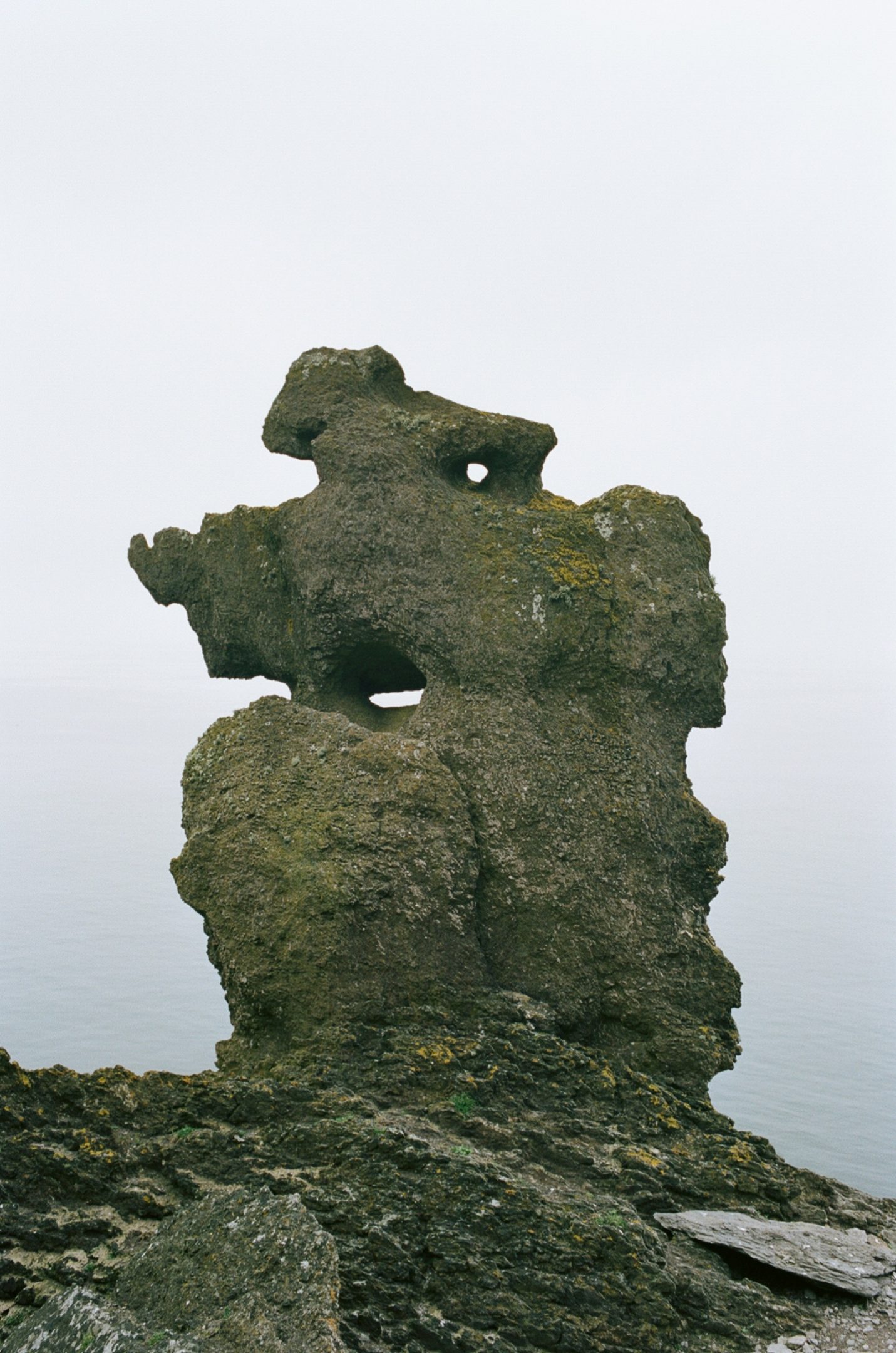Miles out from Ireland’s south-western tip Skellig Michael peers from the mist, a jagged triangle of rock jutting out from the Atlantic. Along its side, two ancient staircases of roughly hewn stone snake their way up a sheer face of rock and grass. On a small plateau near the peak stand small weathered stone huts, huddled together and looking over the sea.
For centuries this inhospitable outpost was home to a tiny colony of Catholic monks, a dozen men at a time pitting their faith against wild weather, Viking raids and biting isolation at the very edge of their known world. But recent years have seen Skellig Michael become popular among a different breed of pilgrim, and those generations of nameless monks overshadowed by another robed monk: some guy called Luke Skywalker.
The golden fingerprints of Hollywood location scouts can be seen around Ireland, bringing new celebrity to spectacular natural heritage through big ticket cameos in Game Of Thrones and Star Wars. Two and a half minutes of screen time at the conclusion of 2015’s The Force Awakens was all it took for the identity of this UNESCO World Heritage Site to be permanently reshaped. On this overcast morning we travel in a convoy of small, largely family-operated boats licensed to ferry visitors to the island. It’s the first day of the brief four-month window where Skellig Michael can be safely reached by sea.
 Skellig Michael
Skellig Michael
The monks chose the site of their home for its sanctuary and solitude, and it remains one of the earliest and most extreme footholds of a monastic tradition riddled throughout the isle. Nearly 700 steps lead up to St. Fionán’s monastery, named for the 6th century cleric credited with its foundation. No two steps are identical, and were either set in place or carved out the bedrock over a millennia ago. Peppered with sparse patches of grass and wildflowers clinging to bare rock, they frequently come loose, creating constant work for the small team of guides who live on the island in shifts during the summer months. Unlike the monks, none will risk staying all year round. The danger is real; a particularly precarious section of the climb claimed two tourists in separate incidents a decade ago.
Three years ago George Lucas’ multi-billion dollar space opera placed the island at the centre of modern pop culture’s best approximation of a religious schism. On one side are pockets of largely male devotees, with a white knuckled attachment to the original films and their vast, inconsistent canon of spin-off literature. On the other, current steward Disney and its efforts, however cynical and commercially-driven, to chart a new course for the saga with divergent narrative interpretations and a cast led by women and men of backgrounds more inclusive than the casting pool of 1970s Hollywood. For the former group, adding a veneer of “social justice warrior” politics to a franchise about an anti-imperialist resistance movement was a unique kind of sacrilege.
The tug of war saw actors Daisy Ridley and Kelly Marie Tran abandon social media in the face of unrelenting abuse. An online campaign to crowdfund a remake of 2017’s The Last Jedi to be “as close to universally acceptable as possible” attracted both support and ridicule (“you’ll never please everyone”, the campaign’s Twitter account says, “but at least it wouldn’t be blasphemy!”). The Last Jedi itself is a self-aware commentary on its own iconoclasm, and the folly of uncritical devotion to old ideas: a key scene literally set fire to “sacred texts” of the Jedi order that were hidden on ‘Ahch-To’, the intergalactic location Skellig Michael stands in for.
Mist still hangs overhead as we pass out-of-breath Baby Boomers on the way up, sidling into the monastery courtyard near the top of the island. Here the reality of the island’s way of life sinks in, an intense expression of faith almost unimaginable today. St. Fionán’s is a sobering sight, dotted with grave sites belonging to monks long passed and, tragically, the two young sons of a 19th century lighthouse keeper. It was after their death that keepers were forced to leave their families on the mainland, making Skellig Michael once again an outpost of male solitude. Another lighthouse keeper vanished in 1957.
A silence falls over the group as our guide points to the boys’ graves, nestled among the ruins of a medieval church. Until a voice pipes up: “And… where did they film Star Wars?” A little surprised by the question, the guide points to the green valley between the monastery peak and a second spire of rock. Traditionally known as Christ’s Saddle, it’s now more recognisable as a place where actors Mark Hamill and Daisy Ridley once stood.
The Last Jedi’s polarising release brought more exposure to the island, but for now it seems St. Fionán chose his location so well that even the pull of a Disney tentpole barely register. Although annual visitors have climbed from 12,560 in 2015 to 16,755 in 2017, and roughly plateaued since, weather conditions and the strict management plan around the island’s natural and built heritage ultimately place a natural ceiling on growth. As the impact of climate change makes the island even more unstable, there are now calls for even these numbers to be further limited.
Much of the increase is attributed to upgrades in the boatmen’s fleet – operators have lobbied unsuccessfully for an increase in licenses or an extension to the season, eager to capitalise on the opportunity. After all, even a schedule fully booked for months in advance offers little security when a day’s tours can be scuppered at a moment’s notice by the temperamental sea – a real problem when many visitors pay in cash on the boat.

But Star Wars fans are a dedicated bunch, known to brave the deserts of Tunisia just to steal a glimpse of some abandoned 1977 set pieces. Or at their worst, launch toxic online campaigns against the actors and directors who now lead the franchise. As we descend down to Christ’s Saddle we note two travellers comparing A4 printouts of Force Awakens scenes to the view. One wears a hoodie bearing the insignia of an obscure Rebel squadron, and as we draw closer I notice the other sports a sleeve tattoo. Inked on her arm is a portrait of Jar Jar Binks, a cartoonish alien and the single most-maligned element of Lucas’ bumpy 2000s prequel films. Last year Ahmed Best, the actor who portrayed Binks, revealed he once contemplated suicide in the face of audience vitriol, newly weaponised by the internet.
But here in the middle of the ocean is at least one fan not afraid of embracing changes that others find heretical. The iconography might seem wild and confusing to the lonely, isolated male monks of Skellig Michael, but perhaps they would recognise the extremes – and limitations – of devotion.
As for the other, more regressive type of Star Wars fan? Well fellas, you could always go live on an island.
Walter is a writer and editor living on Kaurna Country.
Get the latest from The Adelaide Review in your inbox
Get the latest from The Adelaide Review in your inbox